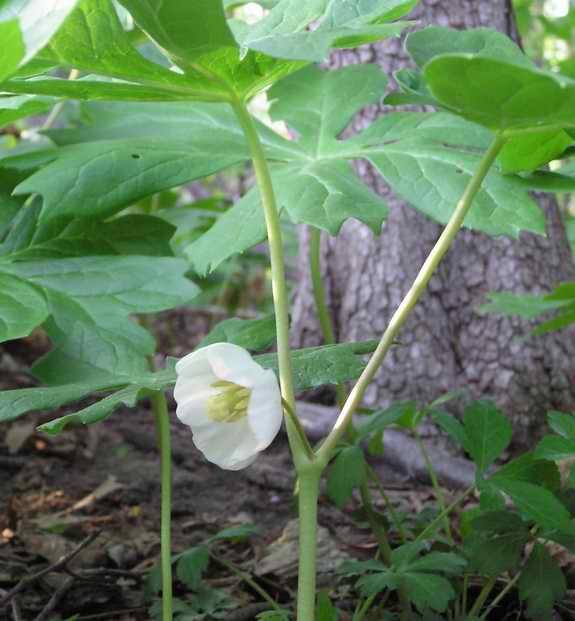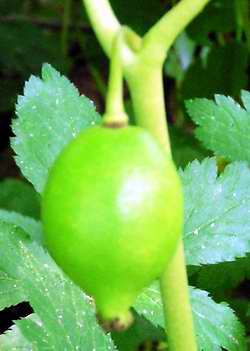|
Common Name: Mayapple, Wild Lemon, Mandrake, Umbrella Plant Scientific Name: Podophyllum peltatum (from Greek podos meaning foot, phyllon meaning leaf and pelta meaning shield; all refer to the shape of the leaf)
A distinctive umbrella shaped plant that grows in large colonies in deciduous forests throughout the eastern United States.
Potpourri:
The roots, leaves and stem of the Mayapple
The Mayapple was used by Native Americans as a medicine, the root was dried and ground into a powder to make a laxative tea to treat intestinal worms and as an insecticide, the liquid directly from the root protected corn seeds from insects. It was also used by the Iroquois and Huron to commit suicide, death occurring in hours.
Mayapple has been recognized as a pharmaceutical since the 1820's. . It is not grown commercially, but about 300,000 pounds are collected in the wild for the drug Podophyllin and its derivatives which interfere with cell division by poisoning the cell during mitosis. Podophyllotoxin is used in creams as a treatment for genital warts and Etoposide is administered intravenously or orally mainly to treat testicular cancers and small cell lung cancers. |

 are
poisonous, causing inflammation of the eyes and severe dermatitis. Alkaloids
in the root structure that protect the plant from parasitic diseases are the
source of the poison.
are
poisonous, causing inflammation of the eyes and severe dermatitis. Alkaloids
in the root structure that protect the plant from parasitic diseases are the
source of the poison.